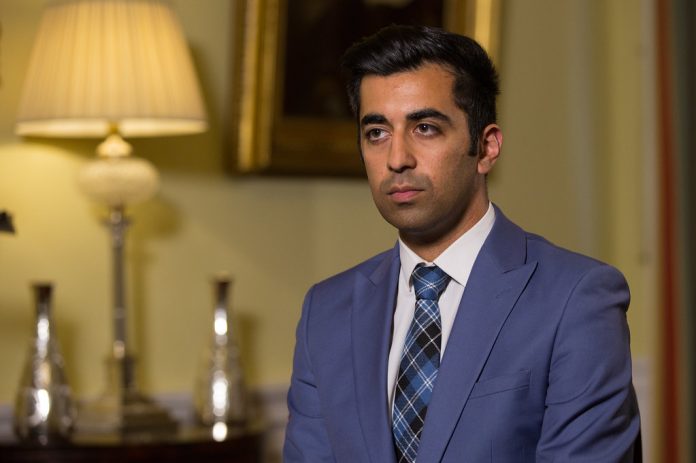Humza Yousef, the favoured candidate of the party establishment, has been elected as the new leader of the Scottish National Party (SNP). He will now also be the Scottish government’s first minister at Holyrood. His victory, however, was very narrow. In fact, a majority of the 50,000 SNP members who voted gave their first preference vote to either Kate Forbes (41%) or Ash Regan (11%). Yousef won 48% of the first preference vote. After Regan was eliminated and her preference votes redistributed, he ended up on 52% to Forbes’ 48%.
Decade of cuts
Yousef becomes SNP leader, following Nicola Sturgeon’s resignation, at a time of turmoil in the party. Its support base is shrinking. It has increasingly clashed with the organised working class through the recent strike wave. This is on top of a record of more than a decade of passing on Tory cuts which have devastated local government and the NHS. Yousef, therefore, is first minister of an SNP-Scottish Green government that will be, from day one, resting on a crumbling social base of support, including inside the SNP itself.
Indeed, if Regan had not stood Forbes could well have won the election. Standing on the right of the party on social and economic issues, Forbes – the current finance secretary who opposes equal marriage, a woman’s right to choose, gender recognition reform and sex outside marriage – is also a passionate neoliberal conservative on economic policy and had virtually no support among SNP MSPs and MPs.
Yousef, in contrast, had the backing of the Sturgeon-Swinney leadership and scores of elected representatives who will be highly relieved that Forbes did not win. Had Forbes won, the end of the coalition with the Greens would have been inevitable, as well as the potential loss of thousands more members, particularly from a younger cohort of the party.
As Socialist Party Scotland pointed out during the election, the SNP membership is heavily weighted to the older, middle class and rural areas of Scotland. This factor, and the evident dissatisfaction among SNP members at the failure of the leadership to make any headway over independence, gave Forbes in particular a stick to beat Yousef with, alongside his woeful record in government. “Continuity won’t cut it” was her main slogan.
Membership drop
Socialist Party Scotland argued that tens of thousands of working-class people who joined the SNP after the indyref had dropped away. During the leadership contest this was brought home in spectacular fashion when the leadership was forced to admit that the membership now stood at just over 72,000, a 53,000 drop since 2015.
Yousef has been a central figure in the SNP administration for the last decade, as transport minister, justice secretary and health secretary. He has presided over a catastrophe in health, with record waiting lists for appointments and waiting times for A&E admissions. As the ‘continuity’ leadership candidate, it will be business as usual for his cuts-making Scottish government.
None of the SNP leadership candidates were remotely on the left. There is therefore no basis for the Scottish Trades Union Congress (STUC) general secretary to claim, as she did in a media interview prior to the result being announced, that Yousef was a candidate most aligned with the aims and policies of the STUC. That will come as news to the tens of thousands of workers who have had to take strike action against the Scottish government and SNP-run councils over the past year.
New party
What the SNP leadership contest underlined most clearly was the need for the trade unions to forge a new political vehicle for the workers’ movement. Rather than seeking to work in partnership with the Scottish government, why not strike out in the direction of building a real workers’ party that would most certainly be aligned with the aims and policies of the trade unions?
There is no question that hundreds of thousands of current SNP supporters, as well as many from Scottish Labour, would rally to a real independent working-class political alternative. Such a workers’ party could lead a real mass struggle for democratic rights and a second independence referendum, as well as advocating policies to tackle the cost-of-living crisis. For example, inflation-proof pay rises, nationalisation of energy, and massive investment into health, education, housing and local government.
Capitalism
It was clear from the SNP leadership contest that none of the candidates had any intention of taking the road of mass working-class struggle to achieve these aims. And no wonder. They all support a continuation of capitalism in an independent Scotland.
The new SNP first minister will be no different in policy terms to the previous two SNP incumbents. Unlike Salmond and Sturgeon, however, he faces a party in turmoil, a collapsing membership and mass dissatisfaction among its electoral base.
The need to build a new mass working-class party is urgent. Socialist Party Scotland will do all it can, both inside the trade unions and by standing worker and socialist candidates in elections, to make that case.







